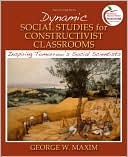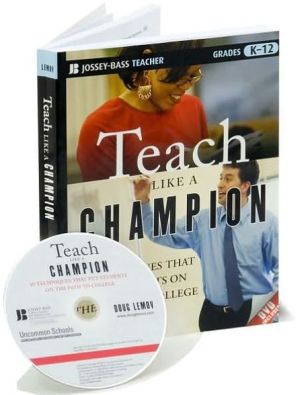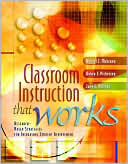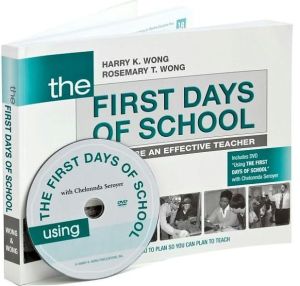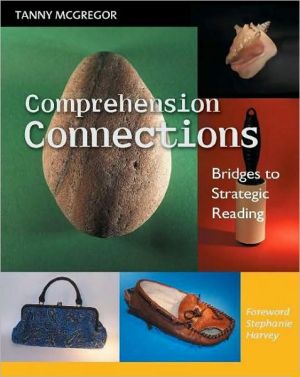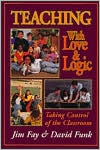Dynamic Social Studies for Constructivist Classrooms: Inspiring Tomorrow's Social Scientists
Search in google:
By modeling creative teaching in today’s classroom climate and by providing engaging and meaningful tools to use in the classroom, this engaging, constructivist-oriented text will help new teachers breathe life into social studies teaching. George Maxim writes the book with the premise that bringing the social studies curriculum to life for elementary students encourages them to become informed, caring citizens who will make a difference in our world. From his text, teachers gain a clear vision of the most effective and creative way to teach social studies and to motivate their elementary students to become social scientists. How will this text help teachers create a dynamic social studies classroom? • NEW! Takes a Developmental Inquiry Approach- Helps readers understand how to introduce and refine inquiry skills through developmentally suitable instructional strategies. • NEW! Integrated Learning: Connecting Learning to the Real World (Ch.3)– this new chapter helps teachers fulfill the goals and standards for social studies instruction by incorporating content and skills from other subject areas. • NEW! “Backward Design” for Unit Planning, presented inChapter 10, helps readers apply this popular approach to planning and teaching social studies units. • NEW! Includes even more examples of exciting classroom activities to help highlight and illustrate important professional concepts and skills. • NEW! Proposes the establishment of Democratic Learning Communities-Helps students experience democracy in their classrooms as a basis for developing the dispositions for democratic living as adults. • Inside an Active Classroom features, threaded throughout chapters, bring you right into lively, successful social studies classrooms. • NEW! Integrated online MyEducationLab resources help support new teachers’ application of chapter content by viewing authentic in-class video footage, rich case studies, examples of authentic teacher and student work, and more. • Full chapter on diversity helps teachers to understand and address the needs of the students they will be teaching.
Part I Foundations of InstructionChapter 1 Dynamic Social Studies: The Subject You Will Teach 1What Do You Remember about Social Studies? 4What Is Social Studies? 7The Six Major Social Sciences 8The Social Science/Social Studies Connection 11Defining the Term Social Studies 12Why Is Social Studies Important? 15Participatory Citizenship 15What Are the Major Goals of Social Studies Instruction in Elementary School? 17What Is Dynamic Social Studies? 18Functional Content 19Cross-Cultural Integration 29Constructivist Teaching Practices 32Intrinsic Motivation 35Respect for Diversity 39A Final Thought 41References 42Chapter 2 Diversity in the Classroom: The Children You Will Teach 45What Is Multicultural Education? 48What Is Culture and Ethnicity? 51How Are Multicultural Perspectives Incorporated into the Social Studies Curriculum? 53The Contributions Approach 54The Additive Approach 56The Transformative Approach 58The Social Action Approach 60What Are the Goals of Multicultural Education? 61Teaching in Culturally Diverse Settings 62Characteristics of Culturally Responsive Teaching 64What Other Inequities Must Be Addressed by Our Schools? 76Educating Children with Special Needs 76Gender and Classroom Instruction 83A Final Thought 87References 88Chapter 3 Integrated Teaching: Connecting Learning to the Real World 91What Is Integrated Learning? 95Drawing from Other Subjects 96The Arts 96Reading 103Mathematics 107Science 113Integrative Learning Materials and Activities 116Hands-On Learning 117Field Trips 119Classroom Visitors 122Computer-Based Multimedia124Hypermedia (Presentation Software) 126Projects 129Key Events of a Project 129Thematic Units 132A Final Thought 134References 135Part II Classrooms for Young Social ScientistsChapter 4 Young Historians: Learning to Unlock the Past 137What Is History? 139Why Is History Important? 141What Should Students Know or Be Able to Do? 142In General, How Should History Be Taught? 143Investigating with Historical Artifacts 144Communicating through Historical Narratives 170How Should Chronology Be Taught? 181Timelines 182A Final Thought 184References 185Chapter 5 Young Geographers: Exploring the People-Place Connection 187What Is Geography? 189Why Is Geography Important? 193What Should Young Geographers Know or Be Able to Do? 194The Five Themes of Geography 194National Geography Standards 197In General, How Should Geography Be Taught? 201Teacher-Guided Discovery 201Maps: The Tools of Geographers 208What Is a Map? 208Maps as Models of Our World 209Representing the World through Block Play 211Children's First Maps 213Maps Representing the Classroom 214Model Neighborhoods and Communities 220Story Maps 221The Globe 221Map Instruction in the Middle and Upper Grades 223Advanced Map Reading Strategies 227A Final Thought 240References 241Chapter 6 Young Political Scientists: Citizens in Action 243What Is Civics? 244Why Is Civics Important? 245What Should Young Political Scientists Know or Be Able to Do? 246In General, How Should Civics Be Taught? 249Engaging Children in Citizenship Processes: The Democratic Learning Community 251The First Day of School 254Establishing Rules (Standards) for Classroom Behavior 256Class Meetings 260Classroom Symbols 261Civic Knowledge: Comprehending Fundamental Information and Ideas 262The United States Constitution 263National Symbols 268National Holidays 274Electing and Voting 277The Actions and Attitudes of Civic Responsibility 280Learning about the Civic Responsibility of Model Citizens 283Civic Dispositions and Virtues 287Critical Thinking 288A Final Thought 305References 307Part III Constructivist Approaches to Classroom InstructionChapter 7 The Learning Cycle: Teacher Scaffolded Social Constructivism 309What Is Constructivism? 312What Is Social Constructivism? 315Zones of Development 316Scaffolding 316The Learning Cycle: What Is the Teacher's Role in a Social Constructivist Classroom? 318The Exploration Phase 318The Concept/Skill Development Phase 327The Concept/Skill Application Phase 350A Final Thought 354References 355Chapter 8 Collaborative and Cooperative Learning: Student-Assisted Social Constructivism 357What Are Collaborative and Cooperative Groups? 360How Does Group Learning Work? 361Getting Started 361Collaborative and Cooperative Learning Groups 365Collaborative Learning 365Cooperative Learning 372A Final Thought 382References 383Chapter 9 Inquiry and Problem Solving: Cognitive Constructivism in Action 385What Is Cognitive Constructivism? 387How Do Teachers Facilitate Inquiry and Problem Solving? 388The Inquiry Process 388The Essence of Inquiry-Based Learning 389Content-Focused Constructivist Inquiry 400Creative Problem Solving (CPS) 412A Final Thought 418References 419Part IV Key Organizational DecisionsChapter 10 Managing Instruction: Planning Lessons and Units 421Why Is Planning Important? 424How Are Unit Plans Constructed? 425Stage 1 Identify Desired Results 427Stage 2 Determine Acceptable Evidence 434Stage 3 Planning for Learning 443A Final Thought 454References 454Appendix A: Cited Children's Literature 455Author Index 457Subject Index 459
